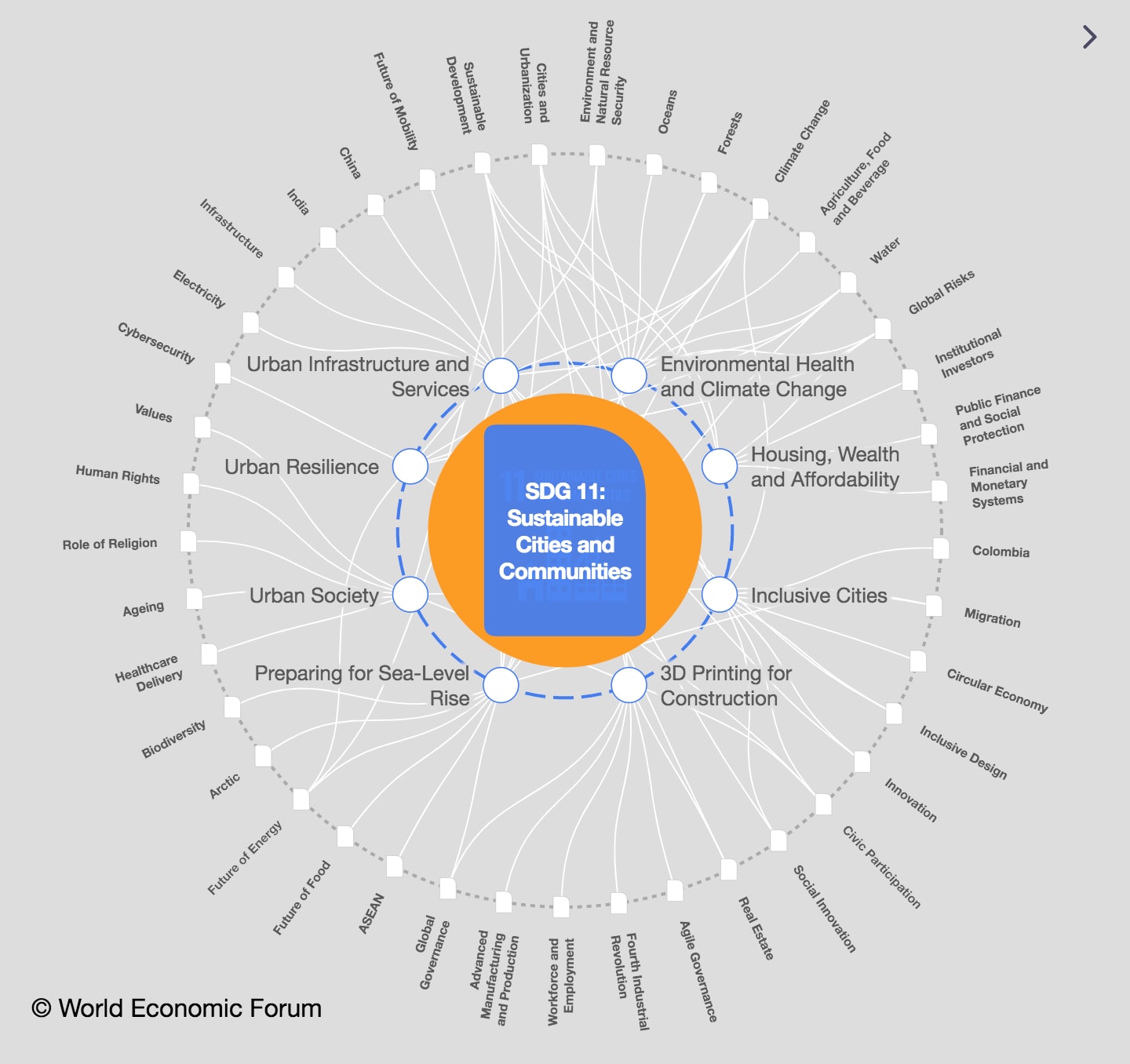These urban water features make cities more climate-change resilient

Cities are using water features to protect them from flooding and rising temperatures. Image: Ramboll Studio Dreiseitl
- Unprecedented levels of flooding have devastated parts of Germany, highlighting that the impact of climate change can strike anywhere.
- City leaders are realizing the need to adapt planning and construction to make cities more resistant against extreme floods and heat.
- Projects in Berlin and London show urban water features can be an effective way of creating heat sinks and reining in flooding
Extreme floods have devastated lives, homes, businesses and infrastructure in Germany. The country is no stranger to flooding, but these record-breaking floods have even taken climate scientists by surprise.
Experts believe the intensity of the floods can be linked to climate change. A warmer atmosphere can store more water - about 7% per extra degree - which means more rain. Weeks of hot weather had preceded the floods.
Beyond the need to holistically and globally tackle climate change - which will dominate discussions at this year’s COP26 in Glasgow - experts say Germany needs to adapt its flood prevention schemes and warning systems.
It must also look at climate change resilience in its urban planning policies to avoid an abundance of sealed surfaces - from housing or business parks - that make it harder for rain to drain away. Infrastructure and buildings also have to be resilient enough to withstand floods.
Establishing natural heat sinks and creating more retention facilities for rainwater will help make cities more resilient against extreme weather, as a project in Berlin shows.
Proactive flood prevention
In the centre of Germany’s capital, at Potsdamer Platz - where the border between East and West used to run - a series of water basins and canals have been created to serve both ecological goals and improve urban living.
Covering an area of about 1.2 hectares, these large water surfaces are fed by rainwater and help lower ambient temperatures in summer, as well as binding dust and humidifying the air.
Water from the roofs of the surrounding buildings is captured and stored in cisterns underground. The stored water is then used to refill the basins. It is also used for sanitation - such as flushing toilets - and irrigation.
How is the World Economic Forum supporting the development of cities and communities globally?
The storage capacity is enough to prevent large volumes of rainwater from being released into the Landwehr Canal: this now only needs to happen an average of three times every 10 years. The cisterns also have additional storage capacity to absorb more water at times of extreme rainfall.

Once the basins have been filled, water runs on through a biotope - an area of uniform environmental conditions - for treatment and is aerated as it flows through the canals.
The project was part of the redevelopment of central Berlin - including major construction projects at the Potsdamer Platz, which used to be part of East Berlin’s death strip before the wall fell in 1989. It was carried out in the late 1990s, building the city’s climate resilience to deal with both heat and flooding - as well as creating a pleasant urban living environment.
Making London more climate-change resilient
The vagaries of the weather are a daily conversational topic in the UK where flooding has been a recurrent problem over the years - most recently in central London. At the same time, the country has also regularly seen heatwaves, snow and drought.
The Mayor of London, Sadiq Kahn, wrote in The Guardian that the city is now on the frontlines of the climate emergency: “Too often, we in the UK have thought of countries such as India and Bangladesh as being on the frontlines of the climate crisis… The realities of climate change are no longer a distant problem.”
He stressed the measures being put in place to create both greater climate change resilience and tackling the underlying drivers.
One successful initiative, going back to the Millennium, was the creation of the London Wetland Centre, an urban wetland spread out over 42 hectares. It has multiple benefits including promoting biodiversity and providing a haven for birds and weary Londoners - with a ‘blue prescribing’ scheme aimed at improving mental health.

Wetlands can store rain and prevent floods by balancing water levels, act as a buffer from rising sea levels and cool the environment by up to 10°C. They are also a highly effective carbon sink, absorbing large amounts of CO2 to heighten climate change resilience.
“Built-in” climate resilience
The World Economic Forum’s Global Future Council on Cities of Tomorrow hopes to identify how cities can be re-designed to build back better post-COVID and provide the climate and resilience, social and digital infrastructure to do so.
Wetlands and water features are only some measures city planners have at their disposal to combat extreme weather events. Another is urban green spaces, with a raft of research showing they can reduce urban heat island effects to make city dwellers more comfortable in heatwaves.
However, the priority remains tackling the root cause of extreme heat and flooding - and ensuring city architecture and infrastructure is not only climate-change resilient but actively aims to reduce greenhouse gas emissions.
Don't miss any update on this topic
Create a free account and access your personalized content collection with our latest publications and analyses.
License and Republishing
World Economic Forum articles may be republished in accordance with the Creative Commons Attribution-NonCommercial-NoDerivatives 4.0 International Public License, and in accordance with our Terms of Use.
The views expressed in this article are those of the author alone and not the World Economic Forum.
Stay up to date:
SDG 11: Sustainable Cities and Communities
Related topics:
Forum Stories newsletter
Bringing you weekly curated insights and analysis on the global issues that matter.








